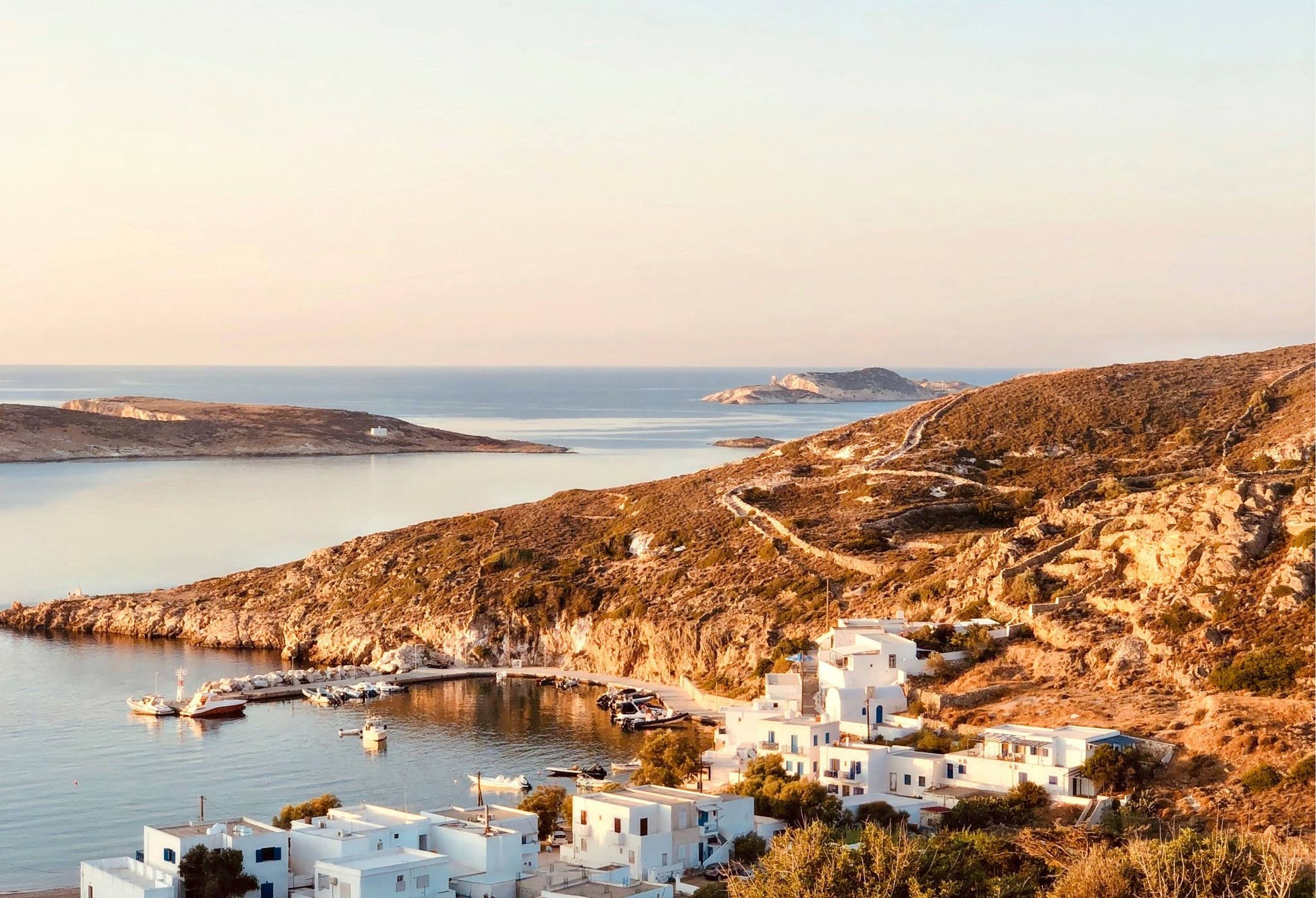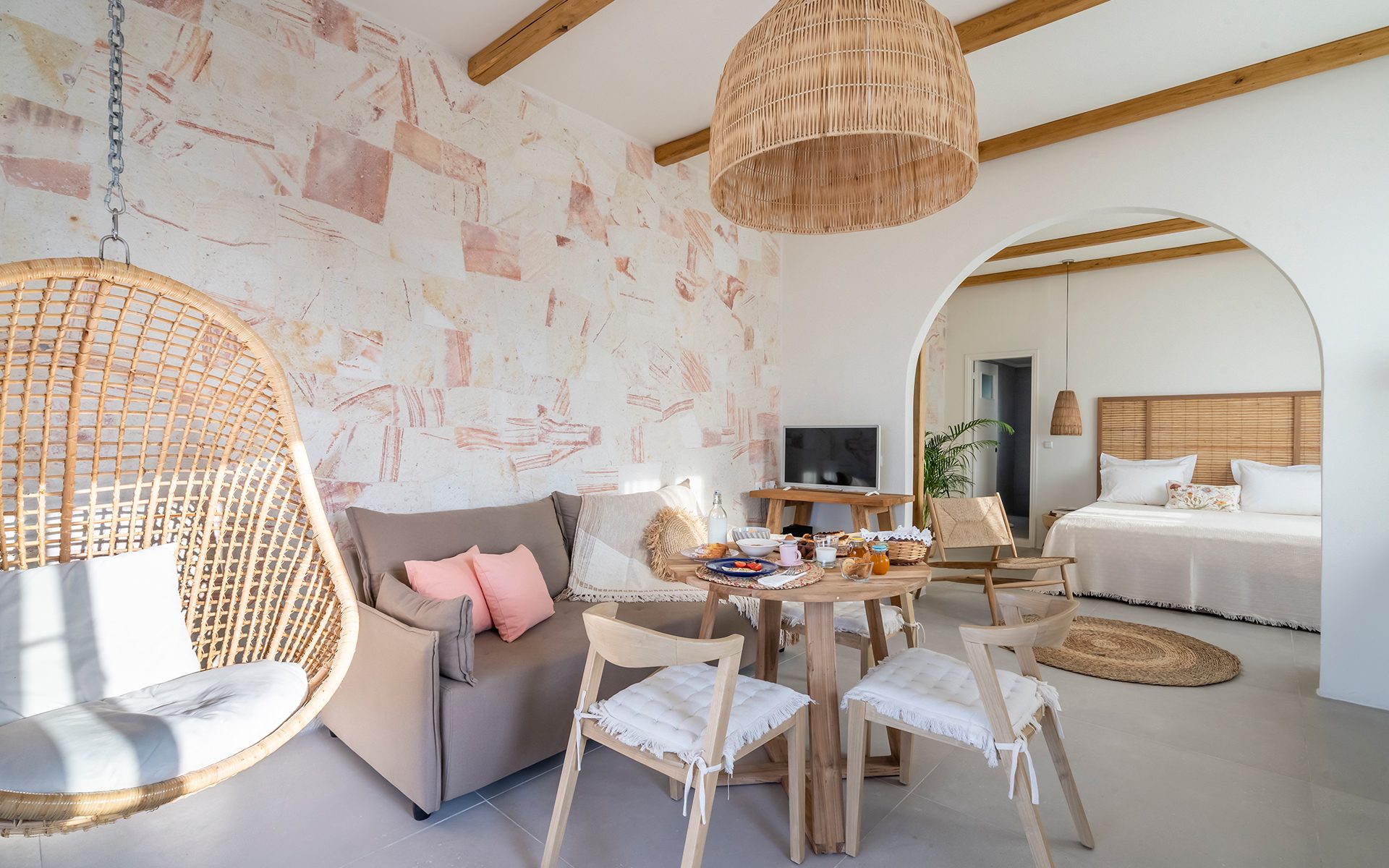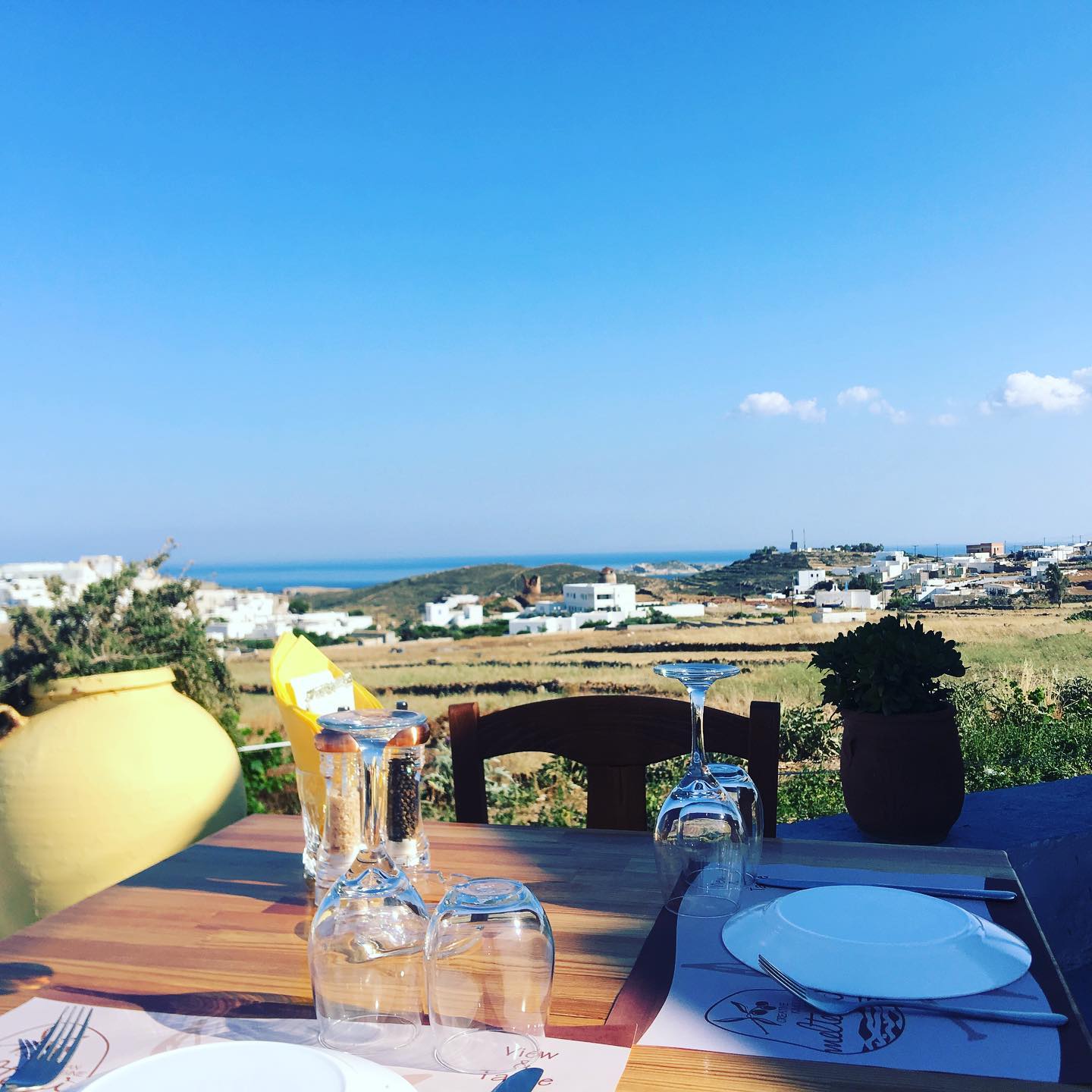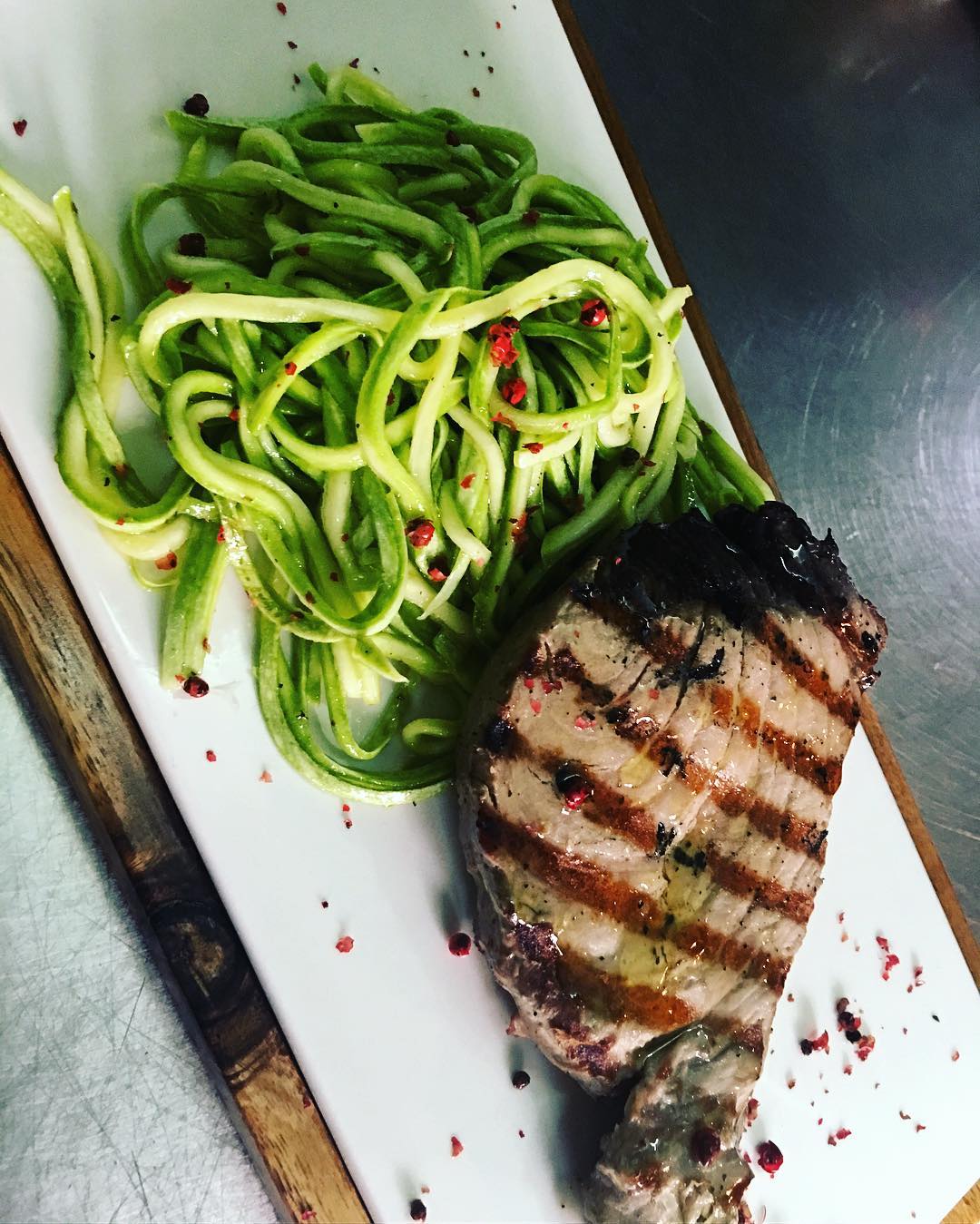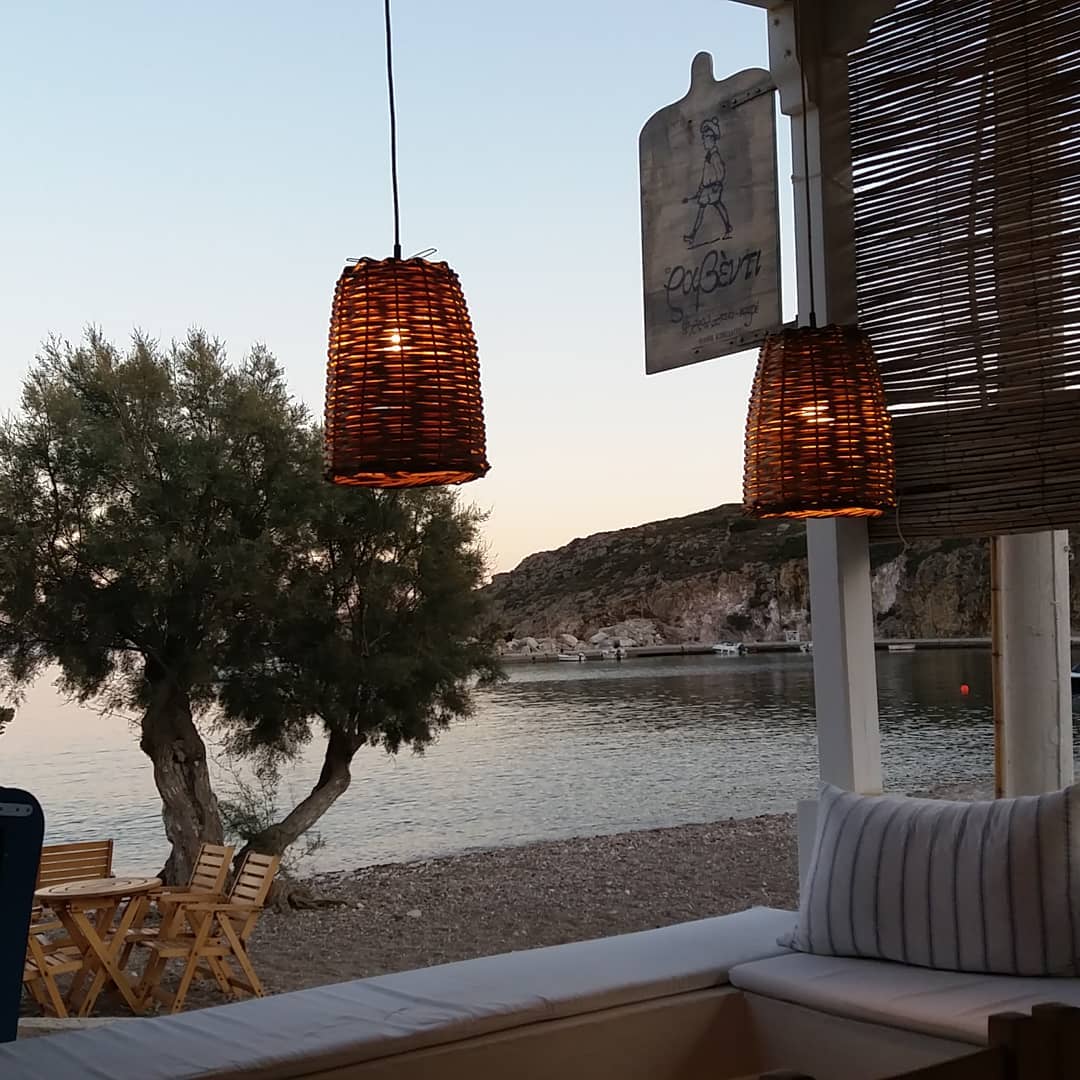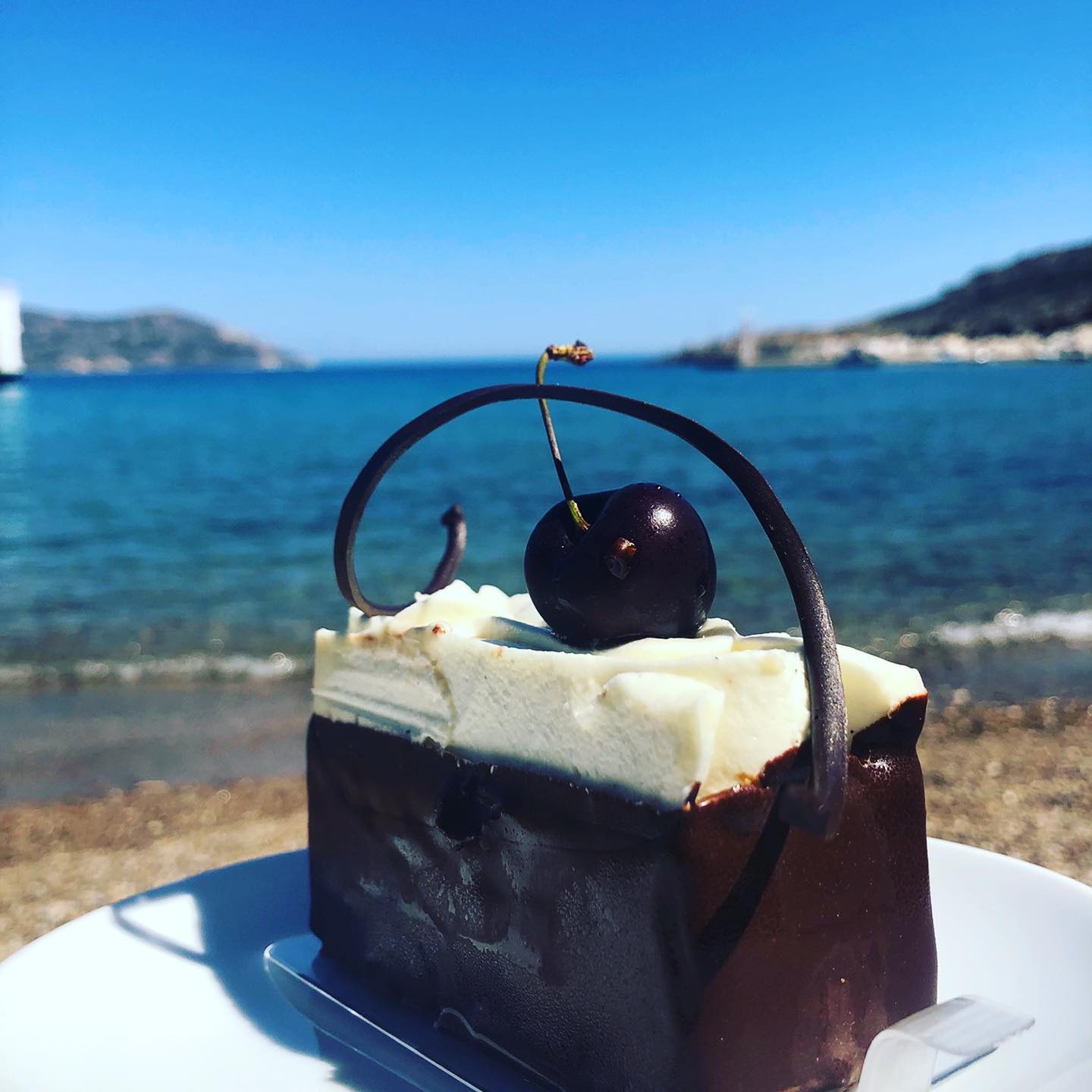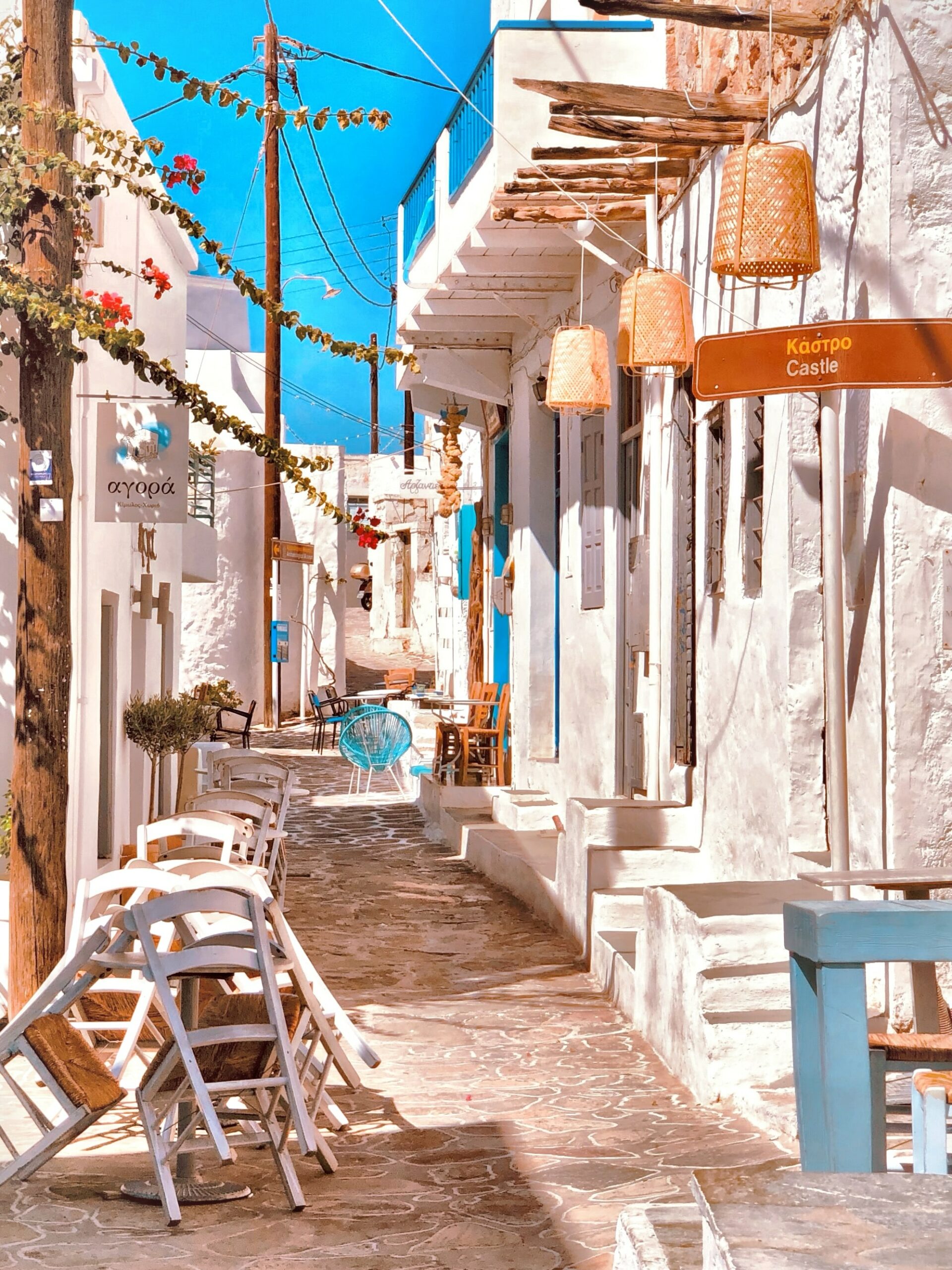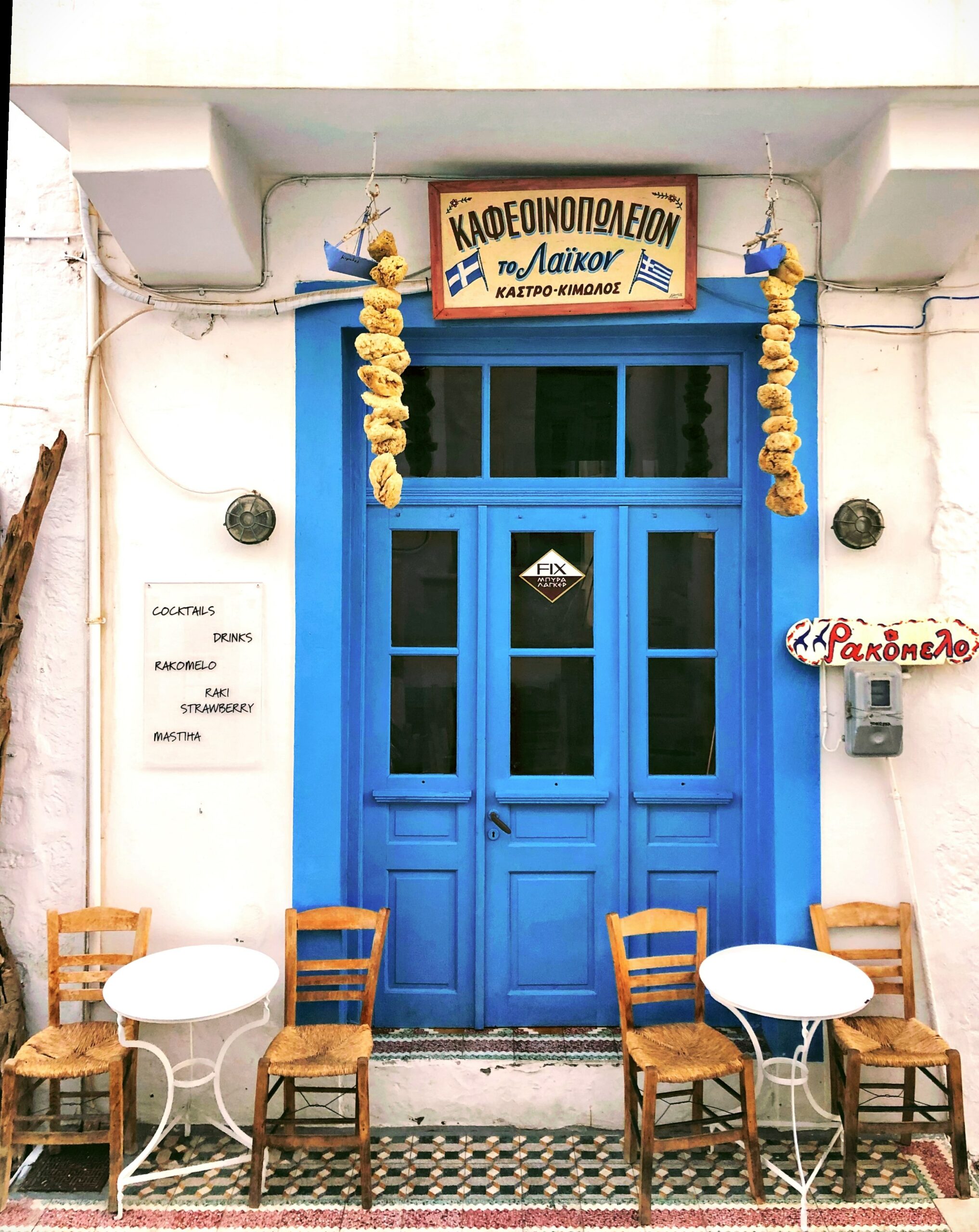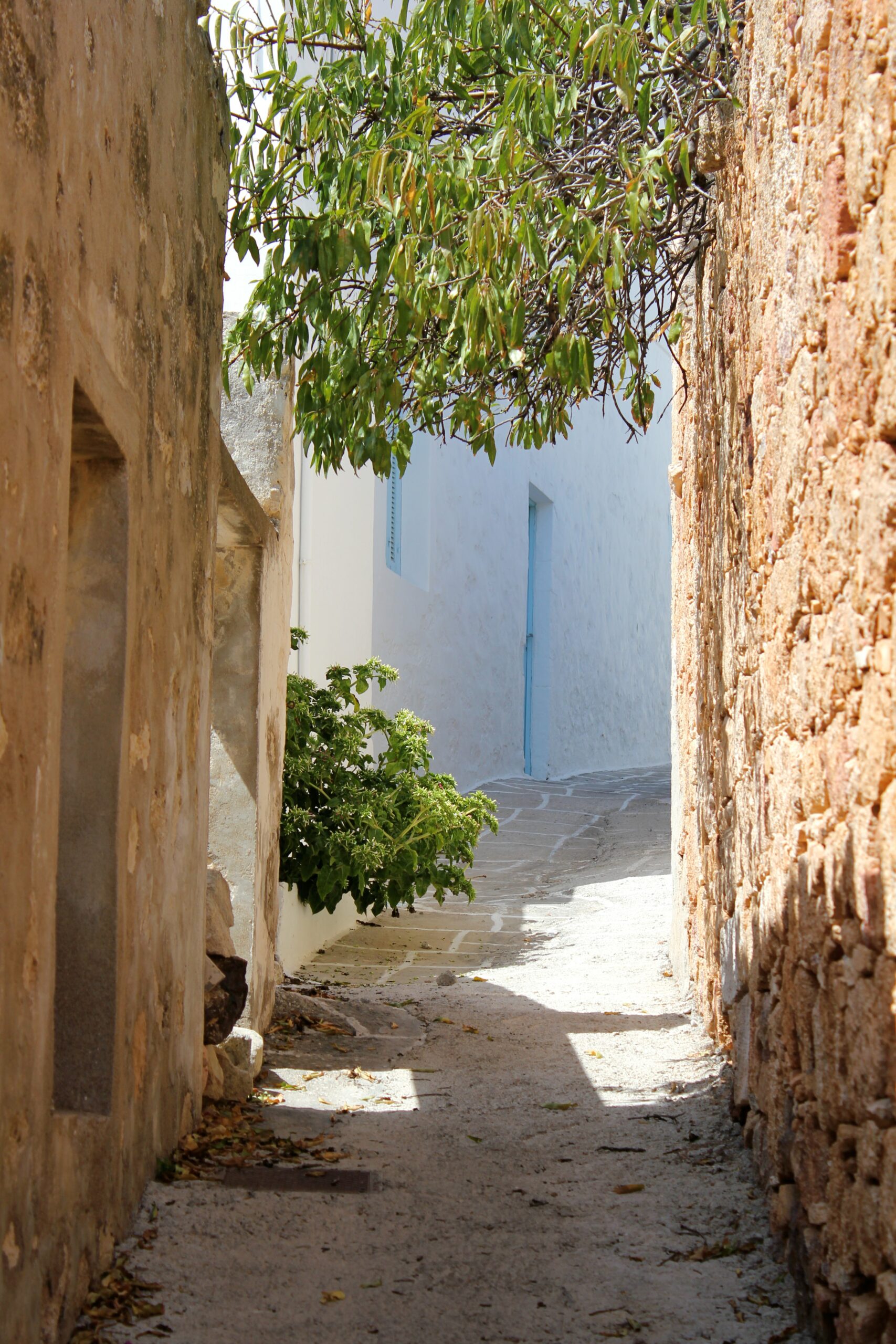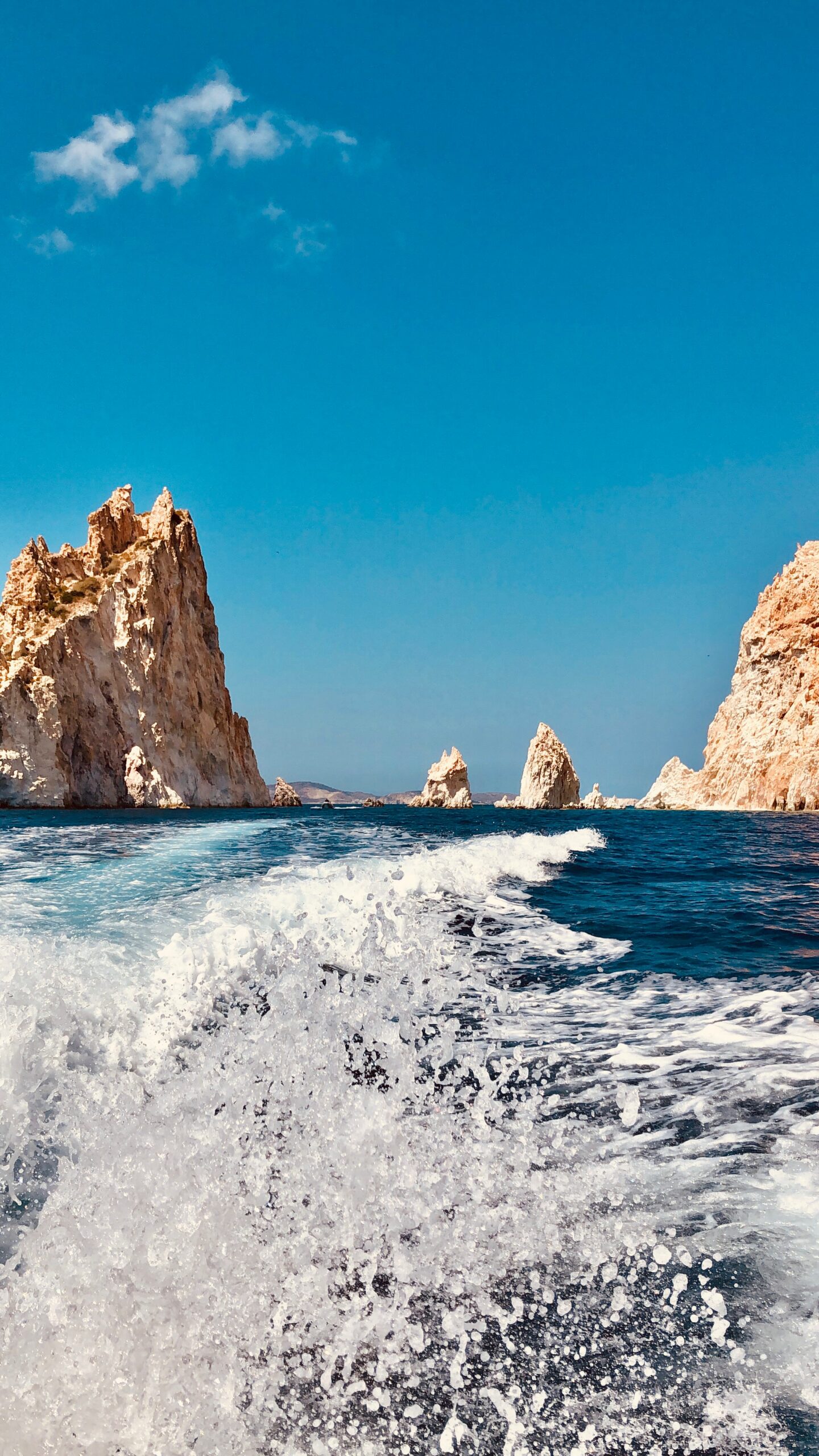Its landscape, in its simplicity is imposing and serene at the same time, the waters are crystalline, and the beaches be they pebbled or sandy are plain magic. A small, compact island, with beautiful traditional villages, with the best among them being Horio, the capital.
Winding white alleys, a few bougainvillea trees adding a pop of colour to the simple, ‘austere’ whitewashed houses, small squares, and a medieval vibe from the Kastro (castle) that’s nestled on the slopes of mount Xaplovouni, right next to Horio, all compose the elaborate setting of Kimolos. Goupa, the small fish village with the colourful ‘sirmata’, the caves carved in the stone, refuges for boats in the winter, and the small cute beach, is not to be missed, while Karras, Agios Nikolaos, and Prassa are all lilliputian settlements with a unique vibe and lovely beaches.
How to get there:
By boat from Piraeus and Milos and once a week from Lavrio
Where to stay:
Kimolis: amphitheatrically built overlooking the bay of Psathi. It has 7 studios and 2 suites with light romantic decoration. The suites include a fully equipped kitchen (Psathi, 6944757908, www.kimolis.com).
Kimolia Gi: a traditional style complex with 6 studios and 2 self-contained houses. All of them are spacious, some are more traditional while others have a more ‘pop’ decoration. They organise many activities like donkey rides, fishing, and barbeque on the beach etc (Prassa, 2287051192, www.kimoliagi.gr).
Psathaki: a beautiful Cycladic complex with bright rooms and suites. Simple but stylish decoration, Coco-mat mattresses and elegant balconies (Psathi, 2287051645, www.psathaki.gr).
Κalamitsi Rooms & Apartments: a very well-kempt complex with simple rooms and studios, pleasantly decorated. The studios come with a fully equipped kitchen, as well as a washing machine. The beach is 150 m. away (Kalamitsi, 6974606086, www.kalamitsiview.com).
The Elephant Beach House: exclusively for two people this is a unique accommodation option. An old ‘sirma’ (where boats were kept) has been transformed into a stylish studio, literally two steps away from the sea (Rema-Elefantas, 2287051676-7, www.ariahotels.gr/en/the-elephant-beach-house).
Where to eat
To Meltemi: a small tavern overlooking Horio with traditional Greek cuisine, casserole dishes and local meat grilled over an open fire (Horio, 2287051360).
I kali kardia: a historic café-mezze tavern on the island with delicious casserole dishes, while if you order in advance you can also have fish (Horio, 2287051495).
Bonatsa: food is served on a beautiful roofed balcony overlooking the sea. Local cuisine with meat and casserole dishes, with a few seafood option on the menu (Bonatsa beach, 6945779594).
To Kyma: Family-run tavern by the sea. For almost three decades it has been honouring and highlighting local ingredients and offering creative flavours. (Psathi, Kimolos, +30 22870 51001)
Raventi: Sweet delights by the sea. Located on the beach of Psathi, Raventi is waiting for you from early in the morning for coffee and freshly-made pastries. (Psathi, Kimolos, +30 22870 51212)
Prassonissi: Fresh fish and seafood on a lovely balcony right above the sea and very close to the most beautiful beach of the island. Delicious dishes and impeccable service in an endless blue setting. Be sure to try the dusky grouper carpaccio, the cheese doughnuts served with tomato jam, steamed mussels, pappardelle with salmon, squid in olive oil and lemon, and the seafood risotto.Their fish, apart from being fresh, is always perfectly cooked. (Prassa beach, Kimolos, +30 694 862 0224)
Traditional products: honey, xino (fresh myzithra cheese), manoura (dry cheese covered in must residue), capers, ladenia (a sort of open pie with fresh tomato, onion and olive oil), Pistacia rusks, pasteli (traditional bars made of sesame and honey) and amarathenies and kolokithenies pies.
What to see
Don’t be fooled by its size, Kimolos has plenty points of interest worth visiting during your stay, from castles and museums to small natural miracles and impressive churches.
Kastro (castle): it’s part of Horio (the island’s capital) and it was most likely built in the 16th century. It’s formed by two concentric rectangular house complexes. The houses inside the complexes were one next to the other and their exterior walls were reinforced, with very few openings, forming a defensive wall. In the centre there’s a small square where the Birth of Christ church is located (Horio).
Archaeological Museum of Kimolos: housed in an old two-storey house inside the traditional settlement, it belongs to the first line of houses outside of Kastro. The permanent collection includes exhibits from the cemetery of the ancient town of Kimolos on Ellinika beach, and also from other locations of the island and cover chronologies from the Prehistoric Era until the Late Antiquity (Horio, 2287051719).
Folklore Museum: here you can admire artifacts from the folklore tradition of Kimolos, like weaving tools and krevataries (large traditional looms), useful objects etc. It’s housed in a traditional building in Kastro that is located in ‘Pano Porta’ and has been founded by the doctor Manolis Christoulakis. (Horio, 2287051719).
Skiadi: right on the hill ‘Sklavos’ there is a huge stone mushroom that the locals call ‘Skiadi’. The different rocks it consists of, as well as the winds, are the reason this unique ‘sculpture’ has been created. The view from that spot is magical and you can see over to Milos.
Metropolitan Church of Panagia Odigitria: majestic and imposing, a church that was created in 1874 with the care and personal labour of the island’s inhabitants who worked for 7 whole years. The icon of Panagia Odigitria is dated to the 15th century while the well-known iconographer and author Fotis Kontoglou has painted the icons of Agia Evgenia and Agios Georgios in the altar (Horio).
Birth of Christ churh: this is the oldest church on the island, built in 1592 and it’s inside the medieval Kastro (castle). Its simplicity is what makes it unique (Horio).
Where to swim
Bonatsa: a large sandy beach one of the few beaches on the island with umbrellas and sunbeds. It’s easily accessible and ideal for families.
Aliki: a lovely large beach with sand and pebbles, it’s not serviced but there are tamarisk trees for shade. It’s easily accessible.
Karras: lovely green-blue waters and white sculpted rocks. It’s not really a beach; you dive into the water from the rocks.
Prassa: thick white sand, turquoise waters – with caves – and a copse of tamarisk trees make it one of the most famous beaches of the island. There are umbrellas and a canteen for supplies.
Rema: a pebbled beach among the rocks and the ‘sirmata’, the carved caves where the fishermen keep their boats. The waters are crystal-clear, and the landscape is gorgeous. It’s not serviced.
Ellinika: a very famous beach as in its sea bottom there is an ancient city with houses, wells and Mycenaeans walls. There’s a large beach and great waters. It’s ideal for scuba diving.
Agioklima: a small gorgeous beach with a few tamarisk trees providing natural shade. There is a thermal spring at the edge of the sea. It’s accessible by water and ideal for those seeking privacy.
Mavrospilia: an amazing beach where you can enjoy an amazing sunset, next to Aspragremna, an impressive rock complex in the sea.
Gerakia Cave: it’s a cave hidden amidst huge rocks and can only be reached by boat. The waters are literally crystalline, and you can jump off the boat and walk in the shallow waters to reach the cave.
What to do
Kimolos is ideal for scuba diving, with the seabed of Ellinika beach being one of the most interesting ones, as there is a whole city submerged there, with houses, wells, Mycenaeans walls and tombs. You can dive with a mask and snorkel in Pelekiti cave, in Kakos Potamos Bay, at Paliokastro, that can only be reached by boat. Diving doesn’t stop in Kimolos, a trip to the islet Polyaigos with the ancient shipwreck (5th -4th century BC) is definitely worth a visit, as the ship’s large cargo was amphorae. But even if you don’t go diving, the islet has beautiful beaches and amazing waters for long swims.
Like every island of the Cyclades, Kimolos is ideal for hiking. Start at Horio and head to the beach Ellinika through a lovely scenery with an amazing view, after one point the trail becomes a well-preserved cobbled alley between olive groves and vineyards. The hike lasts three hours and the trail is easy. Another lovely route, a bit longer, is that from Horio towards Agioklima beach; you’ll come across churches, dirt roads, stone alleys, old stone-built farmhouses, and caves, and the final destination will reward you. It’s interesting to know that just a few metres from Agioklima there is a hot spring!
Goupa is one of the most picturesque villages on Kimolos, with the ‘sirmata’, the caves where the fishermen kept their boats in the winter. The small pebbled beach is gorgeous and worth a swim.
Must: ladenia and tirenia, Kimolos’ version of the Italian focaccia, but better.
Info/Useful numbers
Kimolos Medical Centre: 2287051222
Kimolos Port Station: 2287051071
Kimolos Police Station: 2287051205
Municipality of Kimolos: 2287051218



